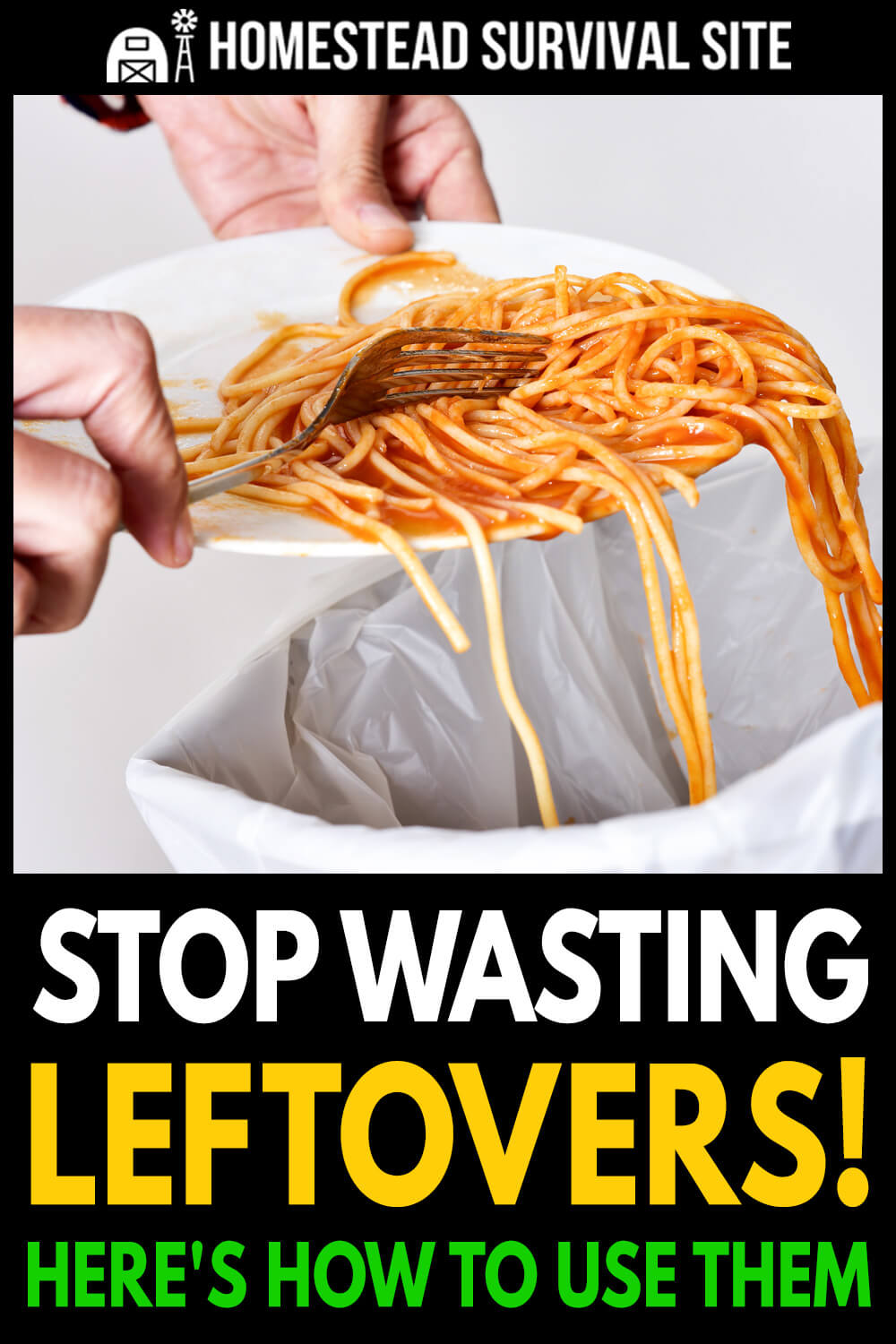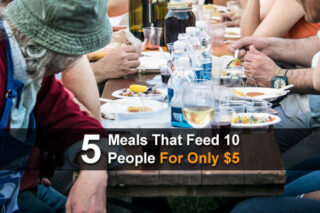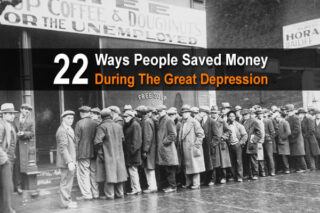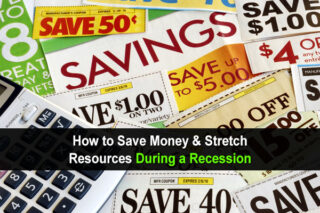Estimated reading time: 9 minutes
The average American throws away four spoiled food items from their refrigerator every week, according to a 2019 study. Based on a survey of 2,000 Americans which was conducted by OnePoll for Bosch home appliances, that loss amounts to $53.81 worth of food each week or $2,798 a year.
Produce topped the list of the most common foods wasted with bananas at 55 percent, strawberries at 50 percent, and apples at 47 percent. Survey participants also said they frequently toss leafy greens (44 percent), potatoes (43 percent) and meat (43 percent). Nearly 75 percent of the respondents admitted that they feel guilty when they throw away food.
Want to save this post for later? Click Here to Pin It On Pinterest!
Those feelings of guilt are justified. Throwing away food not only hurts our wallets, it hurts our planet as well. If you’re cooking at home more than ever these days, you may have more leftovers than ever too. Let’s examine ways you can reduce your family’s food waste.
Menu Planning
Create a menu plan and a list of ingredients you need, including specific quantities of items, before you go food shopping. Check your fridge and your pantry for the supplies you already have on hand to avoid duplication. You could even take a “shelfie” of your kitchen cupboards to remind you what you already have “in stock” at home.
If you’re roasting a chicken on Sunday, for instance, plan for ways to incorporate those chicken leftovers on Monday or Tuesday. You can use shredded chicken for tacos or pasta sauce, for example. Or you could use the remaining chicken and chicken bones to make a great-tasting soup the next day.
Check Dates
Examine fresh products for their use-by dates. Only purchase what you can use before these dates.
When you get home from the grocery store, take the time to store items in your kitchen based on those dates. Use the First-In, First-Out rule to keep items that need to be eaten soon at your fingertips.
Organize Your Refrigerator and Pantry
Do you sometimes forget what you’ve purchased because it has gotten lost in the back of the fridge or cupboard? You’re not alone.
One in four of those Bosch survey respondents admitted that their refrigerators are unorganized, and three in four people said they don’t remember what’s in there.
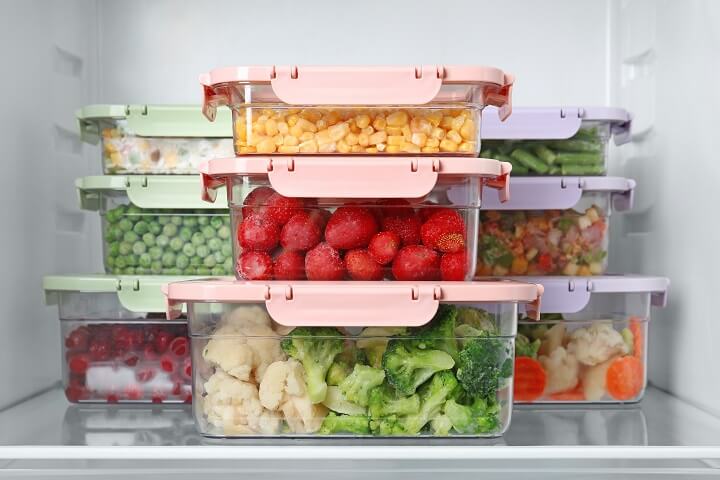
Good Housekeeping recommends that you group items into categories and place them in clear containers in your refrigerator. Your fridge probably has a crisper drawer and a meat/cheese drawer, but you can create other designated areas with trays or bins.
A Lazy Susan is a good idea for perishable items that might get lost in the back of the fridge, such as yogurt, cut lemons, cream cheese, or mayo.
Work With Your Fridge
Understanding how your refrigerator works will help you avoid food waste too. Most of them have the coldest temperatures toward the back and bottom, a bit warmer temps on the top shelf, and their warmest conditions in the door. Therefore, the fridge door is the best spot for your items that have a long shelf life, such as ketchup, mustard, preserves, and hot sauce.
Even though many door shelves have designed spaces for milk and juice, only place these beverages there if you consume them quickly. Otherwise, the bottom shelf is better. Always place your meat at the bottom section of the fridge.
After attending to these basics, organize your food in a manner that makes sense for how you use it. Place things you want to use soon in the front and center areas and store lesser-used food and beverages along the sides or in the back.
Use Food-Storage Containers
Clear containers with well-fitting lids are worth the investment. Look for containers that are stackable to help you maintain order in your fridge.
Get To Know Your Freezer
Your freezer is a great place to store your leftover meals, but be careful that you don’t fall into the same disorganization trap that you had with your fridge. Use the same First-In, First Out rule for your freezer, but add in the all-important labeling step.
Don’t rely on your memory of when you made and froze that beef stew, for example. After a few months in the freezer, you might not even be able to tell what it is. Write the food or meal name and the date you are freezing it with a permanent marker on a piece of painter’s tape.
Freezer stickers are also available for this purpose if you prefer. It’s also helpful to write down the number of servings in the container or any instructions that would be helpful.
If you have a large, crowded freezer, here’s another idea: Hang a magnetic whiteboard on the freezer door. List everything that’s stored in there and update the list as you use the meals.
Reduce Produce Waste
The U.S. Department of Agriculture estimates that the average family of four wastes almost 20 percent of the vegetables and 15 percent of the fruits they purchase both at home and away from home.
Here are some steps to lower that number for your family:
- Choose fruits and vegetables wisely. Examine the times closely by looking for signs of spoilage. Imperfections are okay but, unless you are using it right away, avoid produce items that are overly bruised or damaged.
- Be careful with fresh produce while you are shopping and bringing groceries home. That perfect peach or avocado won’t stay perfect if it gets crushed in your shopping cart or your car trunk.
- Shop farmers’ markets early in the day before heat hastens the ripening of their offerings.
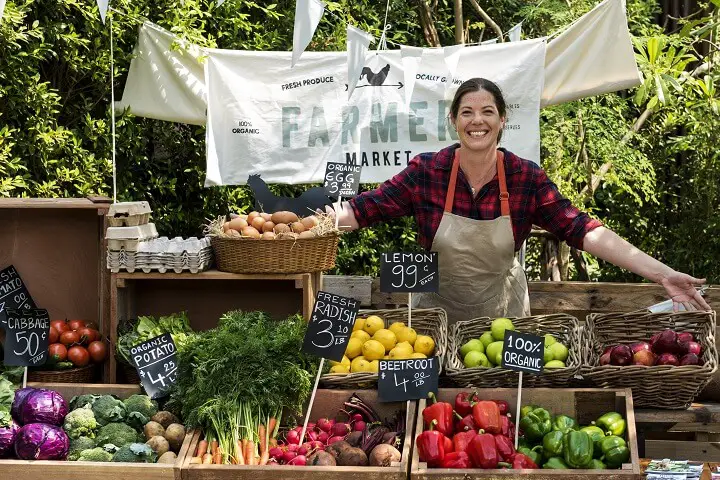
- Allow produce to air-dry first. Many supermarkets spray their produce with water. However, storing wet produce in your fridge can hasten its demise.
- Buy what you need. Some produce (including berries, corn herbs, mushrooms, and leafy greens) has a lifespan of only a couple of days after purchase.
- Avoid air-tight plastic bags or containers when storing produce. They can promote decay as well as bacterial and mold growth.
- Rinse or scrub the entire fruit or vegetable when possible. Cut away any bruises and blemishes.
Freeze Or Can What You Can't Use
You can reduce food waste by cutting up leftover produce to use in other meals, and then canning or freezing them. Blanching your vegetables before freezing will help preserve their color and texture.
Get Creative
You can use leftover fruits and veggies to make nutritious smoothies or juices. Or mash over-ripe berries to make jam or a tasty topping for pancakes.
Dice fruit and vegetables for a home-made salsa. Sautee them for a pasta sauce or scatter them on a pizza as a topping.
Roast leftover veggies to use during the week in sandwiches or burritos. Or munch them throughout the week as a snack.
Recognize Spoiled Food
Fresh produce doesn’t come with use-by dates, and sometimes the printed dates we do see have some wiggle room. How can you know if a food is safe to eat? Throw away any cooked food that has been left out at room temperature for more than two hours.
Otherwise, use your senses. How does it look? Is its color good, and does it smell right? If there are blemishes or any signs of mold growth, can they be removed?
Keep the rule of fours in mind. Refrigerate your leftovers at 40 degrees Fahrenheit or 4 degrees Celsius for no more than four days. If you’re not sure how cold your refrigerator is, buy a fridge thermometer to keep inside your appliance.
Bacteria don’t always change the taste, smell, or appearance of food. If you can’t eat the leftover food within these parameters, then it’s best to freeze it immediately.
Compost Your Leftovers
One of the best uses for your unusable kitchen scraps is as compost. You can compost spoiled produce and produce trimmings, including apple cores, celery roots, and potato and apple peels. Coffee grounds (filters too) and tea bags are also good for the compost pile.
Although composting won’t reduce your food waste, it helps return nutrients to the soil and reduce methane production. Some cities allow their residents to add compost to their yard waste bins as part of their pickup service. Or you can create your own backyard compost system. Here’s a video to help you get started.
According to the Merriam-Webster dictionary, the first known use of the word “leftover” as an adjective – meaning remaining or not used up – was in 1864. The term was first used as a noun – meaning excess food after a meal – in 1866.
In her article “An Economic History of Leftovers,” published in The Atlantic in 2015, Helen Veit maintains that Americans have had an interesting love-hate relationship with leftovers that has corresponded with its economic ups and downs.
During the Great Depression and the two World Wars, leftovers were respectable and necessary, but the wealth of the second half of the 20th century brought more of the “use it or lose it” philosophy toward food. Veit mentions a popular 20th-century joke that answered the question, “What’s the best way to serve leftovers?” with “To somebody else.”
However, Veit suggests in her article that leftovers are “entering another golden age” in the current century. She explains that chefs and home cooks recognize that some foods, especially soups and curries, taste better a day or two after they were prepared.
Today, in a world changed by COVID-19, we are embracing the value – and even the necessity — of repurposing as many items in our everyday lives that we can. Food should be no different.
Like this post? Don't Forget to Pin It On Pinterest!



